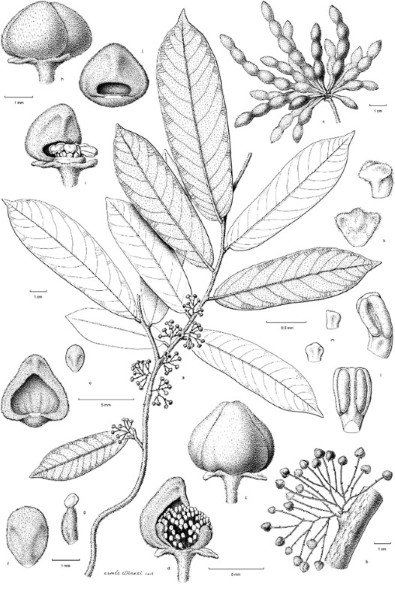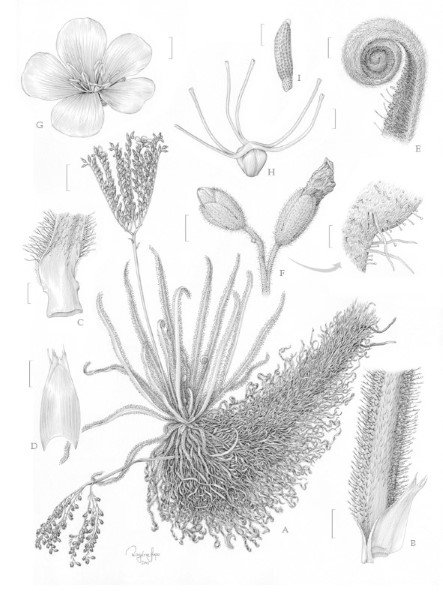Botanical illustrations flourish in the digital age

MODERN TECHNOLOGY IS encouraging artists to turn to their tablets, rather than sketchbooks, to transform wonders of the plant world into intricate, and accurate, scientific illustrations. For the first time in its 13-year history, the Margaret Flockton Award for botanical illustration has allowed entrants to submit digital illustrations rendered on tablets and even hand-drawn entries are displayed as scanned inkjet prints.
Catherine Wardrop is a resident illustrator at the Herbarium in the Royal Botanic Garden Sydney – and one of the judges – and says that it is an exciting period of transition for scientific illustration.
“We wanted to see what we could do to update and streamline the prize and to make it more relevant to changes that are happening in illustration now… So we went digital,” she said.

Monanthotaxis pynaertii illustration by Esmee Winkel.
There has been little evolution in scientific illustration techniques in over 100 years, mostly because this type of illustration is “all about clarity and simplicity, and hand drawn illustrations with a fine pen is about as clear and simple as you can get,” said Catherine, who believes that tablets are now paving the way for a new era.
Given the step away from tradition, there are some sceptics of the digital transition. One artist expressed concern that digitally rendering illustrations would offer endless possibilities for editing and allows artists to zoom in and work at a level of detail impossible for analogue artists. However, Catherine emphasised that the digital expansion is merely accommodating a new skill set, a new technique that “we have to embrace, we can’t pretend it’s not happening,” she said.

Calamus pintaudii illustration by Lucy Smith.
Both analogue and digital illustrations are held to five strict judging criteria based around accuracy and technique, criteria which remain unchanged despite the digital inclusions. The diversity of works submitted to this year’s prize has provided an exciting challenge for the judges.
“In the end, it was works displaying consistency of quality across all judging criteria that brought home the prizes,” said judge and Australian Geographic Creative Director Mike Ellott.
The award commemorates the contribution Margaret Flockton made to Australian scientific illustration in the early 1900s, in her meticulous work with the Director of Royal Botanic Garden, Joseph H. Maiden.

Drosera magnifica illustration by Rogerio Lupo.
Native finger limes, frangipanis and dragon’s blood trees are just some of the species that appear in this year’s exhibition, along with an illustration of a fungi species which somehow crept in.
The entries are on display until the end of May in conjunction with the Botanica 2017 Exhibition at the Royal Botanic Garden Sydney and the winner of the 2017 Margaret Flockton award will be announced this Saturday, 6 May.
READ MORE:
- An illustrated guide to Australia’s gum blossoms
- Illustrating Australia’s dinosaurs
- Australia’s top 10 botanic gardens

